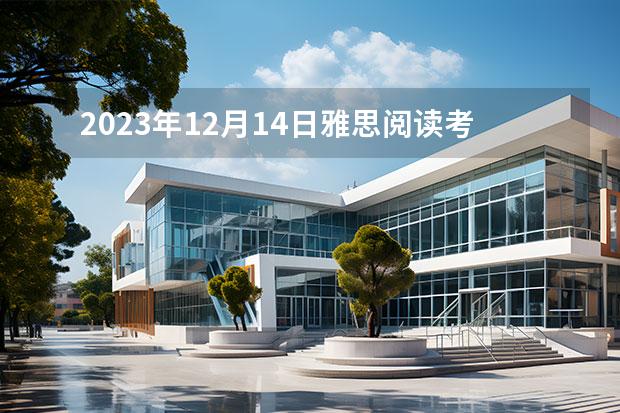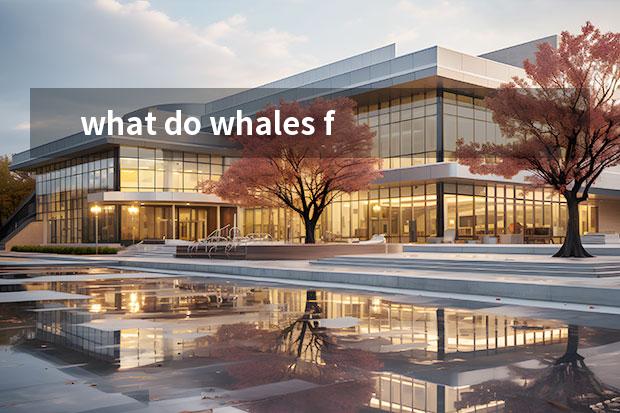2023年12月14日雅思阅读考试真题答案 雅思考试官方指南test1很多朋友对这方面很关心,金博宝188官网整理了相关文章,供大家参考,一起来看一下吧!
本文目录一览:

2023年12月14日雅思阅读考试真题答案
您好,我是专注留学考试规划和留学咨询的小钟老师。在追寻留学梦想的路上,选择合适的学校和专业,准备相关考试,都可能让人感到迷茫和困扰。作为一名有经验的留学顾问,我在此为您提供全方位的专业咨询和指导。欢迎随时提问!上周完成的雅思考试,大家考得怎么样呢?难度大不大呢?来一起了解一下吧。小钟老师为大家准备了2023年12月14日雅思阅读考试真题答案。
Section 1厄尔尼诺现象
El-Nino—theusual weather in the Pacific
文章介绍了厄尔尼诺显现的影响,“康拉德”号的海上调研以及结果,最后Gilbert Walker教授的理论研究和证实
判断题(NG,T,NG,T,F,F,NG)
填空题(famine,crops,global,oceantemperature,airpressure,mildwinters)
Section2工作场所
Section 3手机
2023年最后一场雅思G类考试的大作文考题回忆如下:
In many countries, the amount of rubbish is rapidly increasing. Why doe it happen? What can we do to solve this problem?
这道题曾于2023年11月出现在其他考区,也和剑桥真题集5-B的G类大作题目高度相似。组长搬运剑桥真题集后附9分范文过来,供大家学习参考。
剑5 General Traning Test B, Writing Task 2:
Nowadays we are producing more and more rubbish.
Why do you think this is happening?
What can governments do to help reduce the amount of rubbish produced?
审题:当题中有more and more,可在文中提及与过去的对比;当问政府措施,通常围绕立法、征税、罚款、投入经费、提供设施;当问到垃圾,属于环境话题,通常涉及污染、回收;此外,可对关键名词rubbish进行拆分,从而产生观点展开讨论。就考题而言,有“increasingly”,也可适当用“ past”之类的字样改写并回应。
范文分段分析(划线为建议积累的话题相关表达):以下范文的段落结构可能会让大家觉得不熟悉、难以上手,没关系,这种2-part类的题目相对好写,只需开头结尾改述背景并预告/总结全文,每个主体段各回应一个问题/写作任务即可。建议大家着重学习范文中的观点和话题相关词汇。
I think it is true that in almost every country today each household and family produces a large amount of waste every week. Most of this rubbish comes from the packaging from the things we buy, such asprocessed food. But even if we buyfresh foodwithout packaging, we stillproduce rubbishfrom the plastic bags used everywhere to carry shopping home.
学习点:开头段改述题目&引出观点。将“垃圾增多”具体到“家庭垃圾”,并进一步落到“包装”。
The reason why we have so much packaging is that we consume so much more on a daily basis than families did in the past.Convenienceis also very important in modern life, so we buypackaged or cannedfood that can betransportedfrom long distances andstoreduntil we need it, first in the supermarket, and then at home.
学习点:回应“为什么”。第一句承接开头段提出的包装问题,使段落之间的衔接很紧密,具体的语言表达很扣题“we consume so much more families in the past”扣题中的 and more。第二句是个长句,进一步解释为什么包装增多。“图方便”可以是很多问题的原因,雅思写作小白可以记下来,用于“原因类”写作任务的构思。
However, I thinkthe amount of waste producedis also a result of our tendency touse something once and throw it away. We forget that even the cheapest plastic bag hasused up vaulable resources and energyto produce. We also forget that it isa source of pollutionand difficult todispose of.
学习点:继续回应“为什么”,“is also a result of”是很好的连接和表达方式。第二句和第三句解释为什么会出现使用一次性物品的趋势。“缺乏观念”也是很多问题的原因。
I think,therefore,that governments need to raise this awareness in the general public. Children can be educated aboutenviromental issuesat school, but adults need to take action. Governments canencourage such action by putting taxes on packaging, such as plastic bags, byproviding recycling servicesand byfining househoulds and shops that do notattempt to recycle their waste.
学习点:回应第二个写作任务“怎么办”。一是提高公众意识,这个idea承接了上一段的“forget”(认识不足)。二是鼓励环保行为,比如征包装税,提供回收设施,对不进行垃圾回收的家庭和商店进行罚款。这一段有一些同类问题的“万用表达”,比如:提高认识 raise the awareness,采取行动 take action,提供设施 provide services,征税 put tax on等。这一段还值得注意的是观点拓展方式,即分人群 children/adults和列举主体 household/shops。
With the political will, such measures could really reduce the amount of rubbish we produce. Certainly nobody wants to see our resources used up and our planetpoisoned by waste.
学习点:承接上一段,小结。
(272 words)
希望以上的答复能对您的留学申请有所帮助。如果您有任何更详细的问题或需要进一步的协助,我强烈推荐您访问我们的留学官方网站 ,在那里您可以找到更多专业的留学考试规划和留学资料以及一对一的咨询服务。祝您留学申请顺利!
剑桥雅思阅读AUSTRALIA’SSPORTINGSUCCESS及答案解析
做好雅思的阅读题除了掌握对的 方法 ,也离不开我们日常的辛勤练习,下面我给大家带来剑桥雅思阅读AUSTRALIA’S SPORTING SUCCESS及答案解析,一起加油吧!
剑桥雅思阅读AUSTRALIA’S SPORTING SUCCESS
READING PASSAGE 1
You should spend about 20 minutes on Questions 1-13, which are based on Reading Passage 1 below.
AUSTRALIA’S SPORTING SUCCESS
A They play hard, they play often, and they play to win. Australian sports teams win more than their fair share of titles, demolishing rivals with seeming ease. How do they do it? A big part of the secret is an extensive and expensive network of sporting academies underpinned by science and medicine. At the Australian Institute of Sport (AIS), hundreds of youngsters and pros live and train under the eyes of coaches. Another body, the Australian Sports Commission (ASC), finances programmes of excellence in a total of 96 sports for thousands of sportsmen and women. Both provide intensive coaching, training facilities and nutritional advice.
B Inside the academies, science takes centre stage. The AIS employs more than 100 sports scientists and doctors, and collaborates with scores of others in universities and research centres. AIS scientists work across a number of sports, applying skills learned in one — such as building muscle strength in golfers — to others, such as swimming and squash. They are backed up by technicians who design instruments to collect data from athletes. They all focus on one aim: winning. ‘We can’t waste our time looking at ethereal scientific questions that don’t help the coach work with an athlete and improve performance,’ says Peter Fricker, chief of science at AIS.
C A lot of their work comes down to measurement — everything from the exact angle of a swimmer’s dive to the second-by-second power output of a cyclist. This data is used to wring improvements out of athletes. The focus is on individuals, tweaking performances to squeeze an extra hundredth of a second here, an extra millimetre there. No gain is too slight to bother with. It’s the tiny, gradual improvements that add up to world-beating results. To demonstrate how the system works, Bruce Mason at AIS shows off the prototype of a 3D analysis tool for studying swimmers. A wire-frame model of a champion swimmer slices through the water, her arms moving in slow motion. Looking side-on, Mason measures the distance between strokes. From above, he analyses how her spine swivels. When fully developed, this system will enable him to build a biomechanical profile for coaches to use to help budding swimmers. Mason’s contribution to sport also includes the development of the SWAN (Swimming Analysis) system now used in Australian national competitions. It collects images from digital cameras running at 50 frames a second and breaks down each part of a swimmer’s performance into factors that can be analysed individually — stroke length, stroke frequency, average duration of each stroke, velocity, start, lap and finish times, and so on. At the end of each race, SWAN spits out data on each swimmer.
D ‘Take a look,’ says Mason, pulling out a sheet of data. He points out the data on the swimmers in second and third place, which shows that the one who finished third actually swam faster. So why did he finish 35 hundredths of a second down? ‘His turn times were 44 hundredths of a second behind the other guy,’ says Mason. ‘If he can improve on his turns, he can do much better.’ This is the kind of accuracy that AIS scientists’ research is bringing to a range of sports. With the Cooperative Research Centre for Micro Technology in Melbourne, they are developing unobtrusive sensors that will be embedded in an athlete’s clothes or running shoes to monitor heart rate, sweating, heat production or any other factor that might have an impact on an athlete’s ability to run. There’s more to it than simply measuring performance. Fricker gives the example of athletes who may be down with coughs and colds 11 or 12 times a year. After years of experimentation, AIS and the University of Newcastle in New South Wales developed a test that measures how much of the immune-system protein immunoglobulin A is present in athletes’ saliva. If IgA levels suddenly fall below a certain level, training is eased or dropped altogether. Soon, IgA levels start rising again, and the danger passes. Since the tests were introduced, AIS athletes in all sports have been remarkably successful at staying healthy.
E Using data is a complex business. Well before a championship, sports scientists and coaches start to prepare the athlete by developing a ‘competition model’, based on what they expect will be the winning times.’ You design the model to make that time,’ says Mason.’ A start of this much, each free-swimming period has to be this fast, with a certain stroke frequency and stroke length, with turns done in these times.’ All the training is then geared towards making the athlete hit those targets, both overall and for each segment of the race. Techniques like these have transformed Australia into arguably the world’s most successful sporting nation.
F Of course, there’s nothing to stop other countries copying — and many have tried. Some years ago, the AIS unveiled coolant-lined jackets for endurance athletes. At the Atlanta Olympic Games in 1996, these sliced as much as two per cent off cyclists’ and rowers’ times. Now everyone uses them. The same has happened to the ‘altitude tent’, developed by AIS to replicate the effect of altitude training at sea level. But Australia’s success story is about more than easily copied technological fixes, and up to now no nation has replicated its all-encompassing system.
剑桥雅思阅读AUSTRALIA’S SPORTING SUCCESS题目
Questions 1-7
Reading Passage 1 has six paragraphs, A-F.
Which paragraph contains the following information?
Write the correct letter, A-F, in boxes 1-7 on your answer sheet.
NB You may use any letter more than once.
1 a reference to the exchange of expertise between different sports
2 an explanation of how visual imaging is employed in investigations
3 a reason for narrowing the scope of research activity
4 how some AIS ideas have been reproduced
5 how obstacles to optimum achievement can be investigated
6 an overview of the funded support of athletes
7 how performance requirements are calculated before an event
Questions 8-11
Classify the following techniques according to whether the writer states they
A are currently exclusively used by Australians
B will be used in the future by Australians
C are currently used by both Australians and their rivals
Write the correct letter, A, B or C, in boxes 8-11 on your answer sheet.
8 cameras
9 sensors
10 protein tests
11 altitude tents
Questions 12 and 13
Answer the questions below.
Choose NO MORE THAN THREE WORDS ANDIOR A NUMBER from the passage for each answer.
Write your answers in boxes 12 and 13 on your answer sheet.
12 What is produced to help an athlete plan their performance in an event?
13 By how much did some cyclists’ performance improve at the 1996 Olympic Games?
剑桥雅思阅读AUSTRALIA’S SPORTING SUCCESS答案
Question 1
答案:B
关键词:exchange of expertise, between different sports/collaborate, across a number of sports
定位原文:B段第2、3句“...and collaborates with… a number of sports …”
解题思路: 题干中讲到不同体育领域的专业知识交流正好跟原文中跨不同体育专家之间的合作相对应,理解意思即可容易找到正确答案。
Question 2
答案:C
关键词: visual imaging/3D, image
定位原文: C段第6句: “...shows off the prototype of a 3D analysis …”
解题思路: 通过题干中的视频成像可以很容易找到原文中对应的3D和成像。
Question 3
答案:B
关键词: a reason for narrowing/ can’t waste time
定位原文: B段最后1句: “We can’t waste our time looking…”
解题思路: 题目中的research activity和原文中的scientific questions 属于同义表达,定位答题区域,发现此句话所要表达的意思是不在一些飘渺的、不切实际的科学问题上浪费时间,也就是说要缩小研究的范围。
Question 4
答案:F
关键词:AIS ideas reproduce/ copying
定位原文: F段第1句话 “Of course, there’s nothing…”
解题思路: 题干中的reproduce是复制的意思,之后从 文章 中发现 句子 有复制copying,即可以直接定位。
Question 5
答案:D
关键词:Obstacle, investigated/ impact, monitor
定位原文: D段第6句“... to monitor heart rate…”
解题思路: 题干提到理想成绩的障碍是如何被调查研究的,而读到对应句子之后看到正好是sensors(传感器)对于运动员跑步的impact(影响)进行研究的仪器,而且obstacles和impact对应。
Question 6
答案:A
关键词:Overview, funded support finance
定位原文: A段倒数第2句 “...finances programmes of excellence…”
解题思路: finances是解题关键,意思为资助,正好跟题干中funded support表达了相同的义项,直接对应。而且之后一句话提及以上项目所提供的服务和建议,可以确信答案。
Question 7
答案:E
关键词:Calculated before an event/ using data, well before a championship
定位原文: E段第1句、第2句 “Using data is a complex business. Well before a championship, ...”
解题思路: 首先通过well before a championship和文章中before an event定位到E段, 之后发现后面提及的“竞争模型”作用就是计算时间和速率,因此内容对应上calculate,此时可断定答案的位置。
Question 8
答案:A
关键词: digital cameras
定位原文: C段倒数第3句: “..SWAN system now used in Australian national…”
解题思路: 前一句已经提到该系统已广泛应用于澳大利亚各项全国赛事之中,而没有提到其他国家,因此可以判断应该只有澳大利亚人在使用。
Question 9
答案:B
关键词:sensor
定位原文: D段第7句:“...With the Cooperative Research Centre for Micro…”
解题思路: 找到相同对应词sensor,读其前后的句子,发现有 Melbourne,断定是澳大利亚人的发明。之后要特别留心动词develop运用现在进行时,表示正在开发;而且注意之后的定语从句采用了将来时,所以可以断定此发明还没有完成,应该属于将来的成果。因此选择B。
Question 10
答案: A
关键词:protein
定位原文: D段倒数第4句: “… AIS and the University of Newcastle…”
解题思路: 非常容易在前面第一句话中找到跟题目protein tests所对应的词语a test ...protein。之后细读前后句,发现后面一句话对于此项科技成果的受益者文章中只提到AIS运动员,即澳大利亚体育学院的运动员,隶属于澳大利亚,所以应该选择A。
Question 11
答案:C
关键词: altitude tent
定位原文: F段倒数第2句: “The same has happened to the ‘altitude tent ’…”
解题思路: 文章中很容易找到用引号括起来的题目中的名词 短语 ,因此只要细心读原句,就会发现开头的‘The same has happened...’同样的事情也发生在……根据 经验 应该顺着文章向上追溯,发现跟‘altitude tent’相同情况的是1996年奥运会上澳大利亚人受益的流线型散热运动服现在全世界都在用。因此 ‘altitude tent’也被世界各国应用。所以答案应该选择C。且根据此段话大意可以了解文章只提到两种研究成果被别国运用,即髙原帐蓬和流线型散热服。所以可以间接判断前三项成果是由澳大利人独享的。
Question 12
答案: (a)competition model
关键词: help an athlete plan, produced / prepare the athlete by, developing
定位原文: E段第1句“Using data…”
解题思路: Help an athlete plan their performance 对应上prepare the athlete by之后,要认真研究题目所问的是what is produced,断定所作答案必定要填一个名词。因此要细读原文发现有单词developing恰与produced相对应,中文意思是“开发”,则答案必定是开发之后的名词。
Question 13
答案: (by)2 percent/%
关键词: 19% Olympic Games, cyclists, improve
定位原文: F段第3句“At the Atlanta…”
解题思路: 分析问句是 ‘By how much... improve’,意思为“提高了多少”,可以判断出答案需要写一个数字。因此仔细阅读相关语句找到 sliced as much as two per cent off cyclists ‘and rowers’ time。很快就可以找到数字百分之二
。
雅思考试官方指南test1
剑桥雅思官方指南Test1阅读真题及解析1雅思阅读部分一直是考生在准备雅思考试的时候提分较快的科目,只要打好雅思基础,再辅以大量的真题练习,考生很容易在雅思阅读考试中取得一个较高的分数。洛阳大华雅思为大家摘选并总结了剑桥雅思官方指南Test1阅读真题及解析1,希望考生可以配合实际的题目训练进行阅读,一定会对接下来的雅思考试有所帮助:
Passage 1 – The Dover Bronze-Age Boat
READING PASSAGE 1 Questions1–13
Questions 1–5
解题策略(Tips and strategies)
此题为阅读中较为简单的图表填空题。做此类题目必须注意一下三点:
•该题目不一定按照顺序在文中出现;
•注意挑选容易定位的定位词;
•分析空格处所要填写内容的语法现象,并注意空格处对于字数的要求。
答案解析(Answer analysis)
Question
Answer
Location
Analysis
1
road
1992
空格之前的“a”表明此处所填的单词必须是可数名词单数。所以很快我们可以从文章第一段找到“1992”这个定位词,句子中最符合的可数名词单数就是“road”这个单词。
2
conference
2002
此处所填的单词是名词。根据定位词“2002”在文章第五段找到定位。题干中的句子的意思是说在2002年召开一个国际化的_____来收集信息。所以根据句意和搭配,最终选出“conference”这个词。
3
proposals
2004
这个空格的定位很简单,答案将会出现在文章的第七段。题干的意思是和重建有关的一件事会被解决或者制造。根据句意,具体定位到“Detailed proposals to reconstruct the boat were drawn up in 2004”这句话,所以最后挑选“proposals”这个单词。
4
launch
2007, 1550BC
这个答案出现自文章第八段的后半部分。除了“2007”,“1550BC”也是一个重要定位词,所以这个答案很好挑选,根据句意马上就可以选出“launch”这个单词。
5
exhibition
2012
这个答案出现在文章最后一段。题干的意思是一个和青铜器时代有的时间主要关注了这艘船和其他物品。所以根据句意最后一段的第一句话里就有我们需要的答案“exhibition”。
Questions 6–9
解题策略(Tips and strategies)
此题为阅读中最为常见的判断题,每次考试都会遇到。但此题型的难度系数在整个阅读中并不低,所以要格外重视。
•判断题在文章中按顺序出现;
•定位词的选择将是一个难点;
•学会分析题干和文章中对应的句子。
答案解析(Answer analysis)
Question
Answer
Location
Analysis
6
TRUE
the boat had been damaged
文章第四段倒数第二句话“The boat was not a wreck, but had been deliberately discarded, dismantled and broken.”和题干表达的意思一致,都说明这艘船故意破坏和抛弃的。特别注意题干中的“on purpose”和原文中的“deliberately”的同义替换;“damage”和“dismantled”的替换。
7
FALSE
Initially
根据定位,原文中提到当时的主流的研究是关于这艘青铜器时代的船只的文化背景等,而非题干中所说的科技方面的研究。所以答案选择FALSE。
8
FALSE
northern end
根据定位词,这道题出现在文章第六段靠后的部分。题干的含义是考古学家又回到发掘现场并找到了消失的位于船体北部的船尾部分。但是文章中提到“the possibility of returning to Dover to…was explored, but…difficulties…”说明因为一些困难,这是并没有成功。所以原文和题干的内容是抵触的,答案选FALSE。
9
NOT GIVEN
2004
在整道判断题中,我们可以先从这大道题开始,因为它最容易定位。根据“2004”这个定位词我们找到了文章的第七段。题干的含义是“2004年发现的证据暗示这艘青铜器时代的船只曾经用于商贸。而在文章中只是说2004年发现的证据证明曾经有一个群落横跨了英吉利海峡,但没有提到这艘船的使用目的,所以此处只能选择NOT GIVEN这个选项。
Questions 10–13
解题策略(Tips and strategies)
此题为阅读考试中出现频率并不高的简答题。
•简答题按照顺序在文章中出现;
•注意简答题的相关的特殊疑问词;
•注意答案不需要原句重现,需要的是从原文中挑选符合要求的词、数字或词组。
答案解析(Answer analysis)
Question
Answer
Location
Analysis
10
six/6
metres/meters/m
How far under the ground
通过审题,我们了解到这里最多可以填写3个单词和一个数字。结合这道题的定位词“how far”,它的答案一定包含和长度有关的数字。根据这些线索,我们找到文章的第二段第一句话,所以这艘船是从地下6米处被挖掘出的。
11
(pads of) moss
natural material, prevent water
通过理解这道题的题干,我们不难发现它还是在讲述这艘船发掘时候的事情,所以这道题的答案不会离开上一道题很远。我们最终在文章第三段的最后一句话找到了答案,文中的“watertight”就相当于题干中的“prevent water”,防水的天然材料就是一些苔藓。
12
(the) hull (shape)
aspect of the boat, 2012
这道题的定位相当简单,根据年份我们可以定位到文章的最后两段。同时根据段落大意,我们可以更精确地定位到倒数第二段。2012年的重建主要关注的就是船体的重建。
13
cost and time/cost
time/time cost
two factors, reconstruction,
not
接着上一道题的定位,我们不难发现这道题也出现在倒数第二段。题干中的重要信息除了“two factors”就是这个否定“not”,段落中涉及到这两点的句子只有最后一句话——花费和时间使得人们不得不按照原型的一半来重建这艘青铜器时代的船只。
以上就是金博宝188官网为大家带来的2023年12月14日雅思阅读考试真题答案 雅思考试官方指南test1,希望能帮助到大家!









